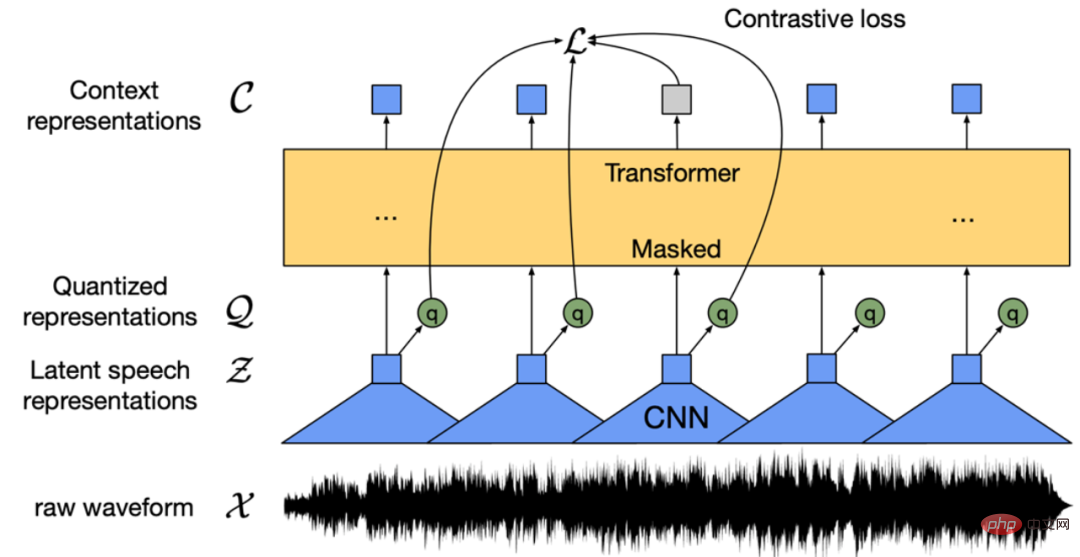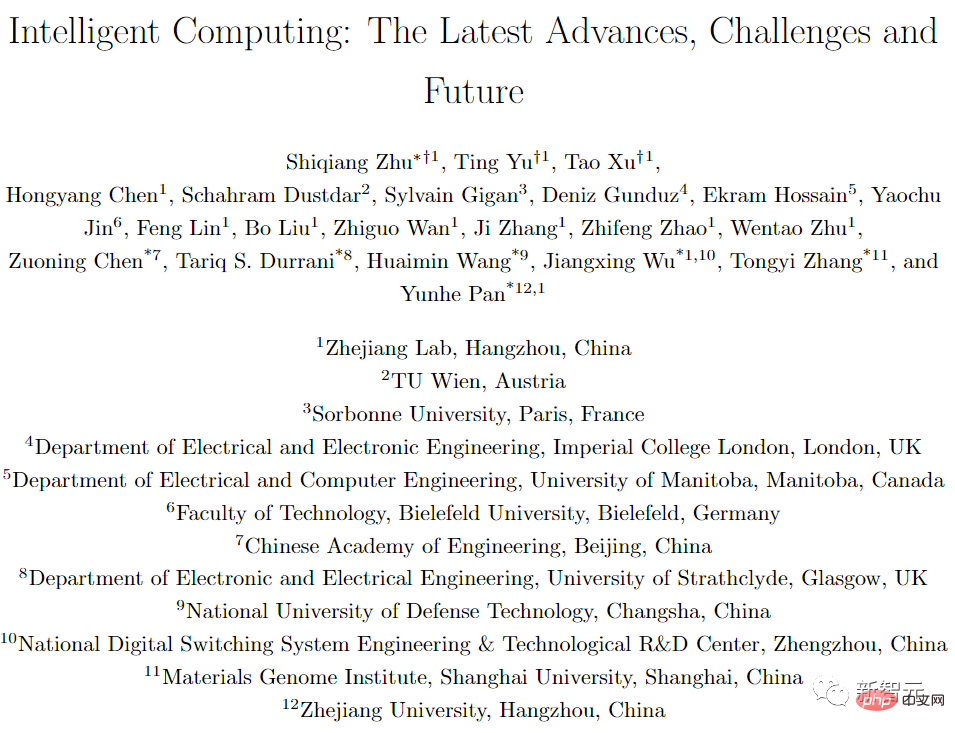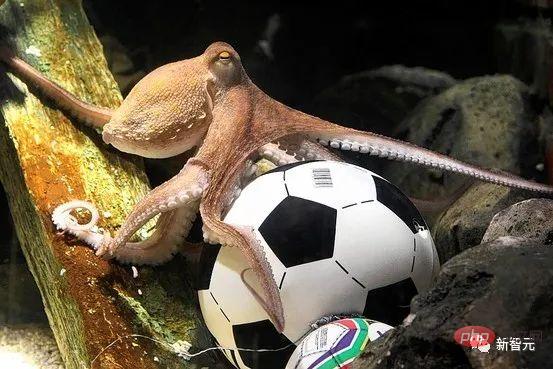 Technology peripherals
Technology peripherals AI
AI The strongest API calling model is here! Based on LLaMA fine-tuning, the performance exceeds GPT-4
The strongest API calling model is here! Based on LLaMA fine-tuning, the performance exceeds GPT-4After the alpaca, there is another model named after an animal, this time it is the gorilla.
Although LLM is currently booming, making a lot of progress, and its performance in various tasks is also remarkable, the potential of these models to effectively use tools through API calls is still urgently needed. Digging.
Even for today’s most advanced LLMs, such as GPT-4, API calls are a challenging task, mainly due to their inability to generate accurate input parameters and the ease with which LLMs Hallucinations caused by incorrect use of API calls.
No, the researchers have developed Gorilla, a fine-tuned LLaMA-based model, whose performance even exceeds GPT-4 in writing API calls.
When combined with a document retriever, Gorilla also demonstrates powerful performance, making user updates or version changes more flexible.
In addition, Gorilla also greatly alleviates the hallucination problem that LLM often encounters.
To evaluate the model’s capabilities, the researchers also introduced the API Benchmark, a comprehensive dataset composed of HuggingFace, TorchHub and TensorHub APIs
Gorilla
Needless to introduce the powerful abilities of LLMs, including natural conversation ability, mathematical reasoning ability, and program synthesis ability.
However, despite its powerful performance, LLM still suffers from some limitations. Moreover, LLM also needs to be retrained to update their knowledge base and reasoning capabilities in a timely manner.
By authorizing the tools available to LLM, researchers can allow LLM to access a vast and ever-changing knowledge base to complete complex computing tasks.
By providing access to search technologies and databases, researchers can enhance LLM's ability to address larger and more dynamic knowledge spaces.
Similarly, by providing the use of calculation tools, LLM can also complete complex calculation tasks.
Therefore, technology giants have begun to try to integrate various plug-ins to enable LLM to call external tools through APIs.
The transition from a smaller, hand-coded tool to one capable of calling a vast, ever-changing cloud API space can transform LLM into computing infrastructure, and The main interface required by the network.
Tasks from booking an entire vacation to hosting a conference can become as simple as talking to an LLM with access to web APIs for flights, car rentals, hotels, dining and entertainment.
However, much prior work integrating tools into LLM considers a small set of well-documented APIs that can be easily injected into prompts.
Supporting a web-scale collection of potentially millions of changing APIs requires a rethinking of how researchers integrate tools.
It is no longer possible to describe all APIs in a single environment. Many APIs will have overlapping functionality, with subtle limitations and constraints. Simply evaluating LLM in this new environment requires new benchmarks.
In this paper, researchers explore methods for using self-structure fine-tuning and retrieval to enable LLM to accurately derive data from large, overlapping, and varying data expressed using its API and API documentation. Make selections in the toolset.
Researchers built API Bench by scraping ML APIs (models) from public model centers, a large corpus of APIs with complex and often overlapping functionality.
The researchers chose three main model hubs to build the dataset: TorchHub, TensorHub, and HuggingFace.
The researchers exhaustively included every API call in TorchHub (94 API calls) and TensorHub (696 API calls).
For HuggingFace, due to the large number of models, the researchers selected the 20 most downloaded models in each task category (925 in total).
The researchers also used Self-Instruct to generate prompts for 10 user questions for each API.
Therefore, each entry in the data set becomes an instruction reference API pair. The researchers employed common AST subtree matching techniques to evaluate the functional correctness of the generated APIs.
The researcher first parses the generated code into an AST tree, then finds a subtree whose root node is the API call the researcher cares about, and then uses this to index the researcher's data set.
Researchers check the functional correctness and hallucination issues of LLMs and provide feedback on the corresponding accuracy. The researchers then fine-tuned Gorilla, a model based on LLaMA-7B, to perform document retrieval using the researchers' data set.
The researchers found that Gorilla significantly outperformed GPT-4 in terms of API functionality accuracy and reduced illusory errors.
The researchers show an example in Figure 1.

In addition, the researchers’ retrieval-aware training of Gorilla enabled the model to adapt to changes in API documentation.
Finally, the researchers also demonstrated Gorilla’s ability to understand and reason about constraints.
In addition, Gorilla also performed well in terms of illusion.
The following figure is a comparison of accuracy and hallucination in four cases, zero samples (i.e., without any retriever) and using retrievers of BM25, GPT and Oracle.
BM25 and GPT are commonly used search engines, while the Oracle search engine will return relevant documents with 100% relevance, indicating an upper limit.
The one with higher accuracy and fewer illusions in the picture has better effect.
Across the entire dataset, Gorilla improves accuracy while reducing hallucinations.

#In order to collect the data set, the researchers carefully recorded HuggingFace’s The Model Hub, PyTorch Hub and TensorFlow Hub models All online models.
The HuggingFace platform hosts and serves a total of 203,681 models.
However, the documentation for many of these models is poor.
To filter out these low-quality models, the researchers finally selected the top 20 models from each domain.
The researchers considered 7 domains for multimodal data, 8 domains for CV, 12 domains for NLP, 5 domains for audio, 2 domains for tabular data, and 2 areas of reinforcement learning.
After filtering, the researchers obtained a total of 925 models from HuggingFace. The versions of TensorFlow Hub are divided into v1 and v2.
The latest version (v2) has a total of 801 models, and the researchers processed all models. After filtering out models with little information, 626 models remained.
Similar to TensorFlow Hub, the researchers obtained 95 models from Torch Hub.
Under the guidance of the self-instruct paradigm, the researchers adopted GPT-4 to generate synthetic instruction data.
The researchers provided three in-context examples, as well as a reference API document, and tasked the model with generating real use cases for calling the API.
The researchers specifically instructed the model not to use any API names or hints when creating instructions. The researchers built six examples (instruction-API pairs) for each of the three model hubs.
These 18 points are the only manually generated or modified data.
And Gorilla is a retrieval-aware LLaMA-7B model, specifically used for API calls.
As shown in Figure 3, the researchers used self-construction to generate {instruction, API} pairs.
To fine-tune LLaMA, the researchers converted it into a user-agent chat-style conversation, where each data point is a conversation and the user and agent take turns talking.

The researchers then performed standard instruction fine-tuning on the basic LLaMA-7B model. In experiments, the researchers trained Gorilla with and without a retriever.
In the study, the researchers focused on techniques designed to improve LLM's ability to accurately identify appropriate APIs for specific tasks - something that is critical in the development of this technology. But an aspect that is often overlooked.
Because the API functions as a universal language that enables effective communication between different systems, proper use of the API can improve LLM's ability to interact with a wider range of tools.
Gorilla outperformed state-of-the-art LLM (GPT-4) on three large-scale datasets collected by the researchers. Gorilla produces reliable ML models of API calls without hallucinations and satisfies constraints when selecting APIs.
Desiring to find a challenging dataset, the researchers chose ML APIs because of their similar functionality. A potential drawback of ML-focused APIs is that if trained on biased data, they have the potential to produce biased predictions that may disadvantage certain subgroups.
To address this concern and promote deeper understanding of these APIs, researchers are releasing a more extensive dataset that includes more than 11,000 instruction-API pairs.
In the example below, researchers used abstract syntax tree (AST) subtree matching to evaluate the correctness of API calls.

Abstract syntax tree is a tree representation of the source code structure, which helps to better analyze and understand the code.
First, the researchers built the relevant API tree from the API calls returned by Gorilla (left). This is then compared to the dataset to see if the API dataset has a subtree match.
In the above example, the matching subtree is highlighted in brown, indicating that the API call is indeed correct. Where Pretrained=True is an optional parameter.
This resource will serve the broader community as a valuable tool for studying and measuring existing APIs, contributing to more equitable and optimal use of machine learning.
The above is the detailed content of The strongest API calling model is here! Based on LLaMA fine-tuning, the performance exceeds GPT-4. For more information, please follow other related articles on the PHP Chinese website!
 从VAE到扩散模型:一文解读以文生图新范式Apr 08, 2023 pm 08:41 PM
从VAE到扩散模型:一文解读以文生图新范式Apr 08, 2023 pm 08:41 PM1 前言在发布DALL·E的15个月后,OpenAI在今年春天带了续作DALL·E 2,以其更加惊艳的效果和丰富的可玩性迅速占领了各大AI社区的头条。近年来,随着生成对抗网络(GAN)、变分自编码器(VAE)、扩散模型(Diffusion models)的出现,深度学习已向世人展现其强大的图像生成能力;加上GPT-3、BERT等NLP模型的成功,人类正逐步打破文本和图像的信息界限。在DALL·E 2中,只需输入简单的文本(prompt),它就可以生成多张1024*1024的高清图像。这些图像甚至
 普林斯顿陈丹琦:如何让「大模型」变小Apr 08, 2023 pm 04:01 PM
普林斯顿陈丹琦:如何让「大模型」变小Apr 08, 2023 pm 04:01 PM“Making large models smaller”这是很多语言模型研究人员的学术追求,针对大模型昂贵的环境和训练成本,陈丹琦在智源大会青源学术年会上做了题为“Making large models smaller”的特邀报告。报告中重点提及了基于记忆增强的TRIME算法和基于粗细粒度联合剪枝和逐层蒸馏的CofiPruning算法。前者能够在不改变模型结构的基础上兼顾语言模型困惑度和检索速度方面的优势;而后者可以在保证下游任务准确度的同时实现更快的处理速度,具有更小的模型结构。陈丹琦 普
 找不到中文语音预训练模型?中文版 Wav2vec 2.0和HuBERT来了Apr 08, 2023 pm 06:21 PM
找不到中文语音预训练模型?中文版 Wav2vec 2.0和HuBERT来了Apr 08, 2023 pm 06:21 PMWav2vec 2.0 [1],HuBERT [2] 和 WavLM [3] 等语音预训练模型,通过在多达上万小时的无标注语音数据(如 Libri-light )上的自监督学习,显著提升了自动语音识别(Automatic Speech Recognition, ASR),语音合成(Text-to-speech, TTS)和语音转换(Voice Conversation,VC)等语音下游任务的性能。然而这些模型都没有公开的中文版本,不便于应用在中文语音研究场景。 WenetSpeech [4] 是
 解锁CNN和Transformer正确结合方法,字节跳动提出有效的下一代视觉TransformerApr 09, 2023 pm 02:01 PM
解锁CNN和Transformer正确结合方法,字节跳动提出有效的下一代视觉TransformerApr 09, 2023 pm 02:01 PM由于复杂的注意力机制和模型设计,大多数现有的视觉 Transformer(ViT)在现实的工业部署场景中不能像卷积神经网络(CNN)那样高效地执行。这就带来了一个问题:视觉神经网络能否像 CNN 一样快速推断并像 ViT 一样强大?近期一些工作试图设计 CNN-Transformer 混合架构来解决这个问题,但这些工作的整体性能远不能令人满意。基于此,来自字节跳动的研究者提出了一种能在现实工业场景中有效部署的下一代视觉 Transformer——Next-ViT。从延迟 / 准确性权衡的角度看,
 Stable Diffusion XL 现已推出—有什么新功能,你知道吗?Apr 07, 2023 pm 11:21 PM
Stable Diffusion XL 现已推出—有什么新功能,你知道吗?Apr 07, 2023 pm 11:21 PM3月27号,Stability AI的创始人兼首席执行官Emad Mostaque在一条推文中宣布,Stable Diffusion XL 现已可用于公开测试。以下是一些事项:“XL”不是这个新的AI模型的官方名称。一旦发布稳定性AI公司的官方公告,名称将会更改。与先前版本相比,图像质量有所提高与先前版本相比,图像生成速度大大加快。示例图像让我们看看新旧AI模型在结果上的差异。Prompt: Luxury sports car with aerodynamic curves, shot in a
 五年后AI所需算力超100万倍!十二家机构联合发表88页长文:「智能计算」是解药Apr 09, 2023 pm 07:01 PM
五年后AI所需算力超100万倍!十二家机构联合发表88页长文:「智能计算」是解药Apr 09, 2023 pm 07:01 PM人工智能就是一个「拼财力」的行业,如果没有高性能计算设备,别说开发基础模型,就连微调模型都做不到。但如果只靠拼硬件,单靠当前计算性能的发展速度,迟早有一天无法满足日益膨胀的需求,所以还需要配套的软件来协调统筹计算能力,这时候就需要用到「智能计算」技术。最近,来自之江实验室、中国工程院、国防科技大学、浙江大学等多达十二个国内外研究机构共同发表了一篇论文,首次对智能计算领域进行了全面的调研,涵盖了理论基础、智能与计算的技术融合、重要应用、挑战和未来前景。论文链接:https://spj.scien
 什么是Transformer机器学习模型?Apr 08, 2023 pm 06:31 PM
什么是Transformer机器学习模型?Apr 08, 2023 pm 06:31 PM译者 | 李睿审校 | 孙淑娟近年来, Transformer 机器学习模型已经成为深度学习和深度神经网络技术进步的主要亮点之一。它主要用于自然语言处理中的高级应用。谷歌正在使用它来增强其搜索引擎结果。OpenAI 使用 Transformer 创建了著名的 GPT-2和 GPT-3模型。自从2017年首次亮相以来,Transformer 架构不断发展并扩展到多种不同的变体,从语言任务扩展到其他领域。它们已被用于时间序列预测。它们是 DeepMind 的蛋白质结构预测模型 AlphaFold
 AI模型告诉你,为啥巴西最可能在今年夺冠!曾精准预测前两届冠军Apr 09, 2023 pm 01:51 PM
AI模型告诉你,为啥巴西最可能在今年夺冠!曾精准预测前两届冠军Apr 09, 2023 pm 01:51 PM说起2010年南非世界杯的最大网红,一定非「章鱼保罗」莫属!这只位于德国海洋生物中心的神奇章鱼,不仅成功预测了德国队全部七场比赛的结果,还顺利地选出了最终的总冠军西班牙队。不幸的是,保罗已经永远地离开了我们,但它的「遗产」却在人们预测足球比赛结果的尝试中持续存在。在艾伦图灵研究所(The Alan Turing Institute),随着2022年卡塔尔世界杯的持续进行,三位研究员Nick Barlow、Jack Roberts和Ryan Chan决定用一种AI算法预测今年的冠军归属。预测模型图


Hot AI Tools

Undresser.AI Undress
AI-powered app for creating realistic nude photos

AI Clothes Remover
Online AI tool for removing clothes from photos.

Undress AI Tool
Undress images for free

Clothoff.io
AI clothes remover

AI Hentai Generator
Generate AI Hentai for free.

Hot Article

Hot Tools

Safe Exam Browser
Safe Exam Browser is a secure browser environment for taking online exams securely. This software turns any computer into a secure workstation. It controls access to any utility and prevents students from using unauthorized resources.

ZendStudio 13.5.1 Mac
Powerful PHP integrated development environment

SublimeText3 English version
Recommended: Win version, supports code prompts!

Zend Studio 13.0.1
Powerful PHP integrated development environment

Dreamweaver CS6
Visual web development tools






